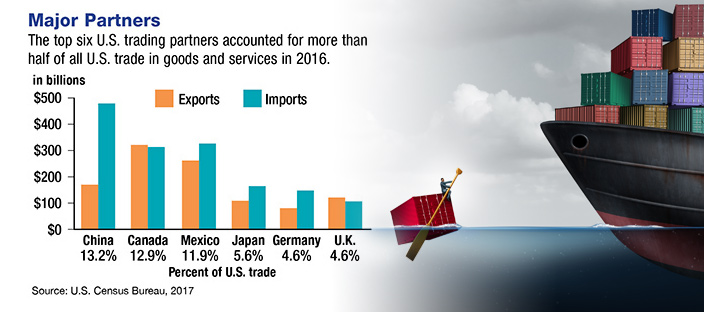The U.S. trade deficit is a consistent and often controversial topic in Washington and the business community. As the new administration presents policies that might affect trade relationships, this may be a good time to consider some of the facts regarding U.S. imports and exports.
Goods and Services
Total international trade in goods and services dropped slightly from $5.0 trillion in 2015 to $4.9 trillion in 2016. Part of this was due to lower oil prices, with declines in the dollar value of crude oil imports and exports of refined petroleum products.
The trade deficit — the gap between exports and imports — was $500.6 billion in 2016, little changed from 2015. To put the recent situation in perspective, the 2015 and 2016 trade deficits were about 5% higher than the deficits in 2013 and 2014, when the economy was still emerging from the recession, but about 30% less than the average pre-recession deficit from 2005 to 2008, even before adjusting for inflation. So in the big picture, our trade balance has improved.
It’s also notable that the United States consistently runs a surplus in services, but it is not enough to make up for the deficit in goods. The largest service export is spending by foreign visitors (considered an export because visitors bring foreign funds into the country), followed by business services and intellectual property charges. The top three categories of imported goods include capital equipment, consumer goods, and industrial supplies.
The China Problem
Although the United States ran a deficit with many trading partners in 2016, the largest by far was with China at $310 billion, equivalent to more than 60% of the total U.S. trade deficit. The good news is that this deficit represented a decrease of $24 billion from 2015. In the long term, however, establishing a balance with China presents a daunting challenge considering the importance of inexpensive Chinese goods for American consumers and businesses, and the slow growth of a Chinese middle class that might consume American goods. Large deficits with Japan, Germany, and Mexico are also a concern, but China is the “Great Wall” of the U.S. trade deficit.






Leave A Comment